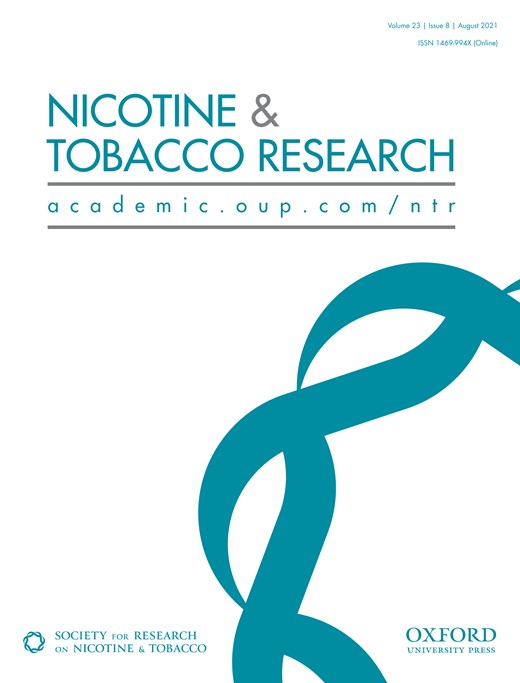-
Views
-
Cite
Cite
Taghrid Asfar, Amanda Perez, Patrick Shipman, Adam W Carrico, David J Lee, Maria Luisa Alcaide, Deborah L Jones, Judson Brewer, Tulay Koru-Sengul, National Estimates of Prevalence, Time-Trend, and Correlates of Smoking in US People Living with HIV (NHANES 1999–2016), Nicotine & Tobacco Research, Volume 23, Issue 8, August 2021, Pages 1308–1317, https://doi.org/10.1093/ntr/ntaa277
Close - Share Icon Share
Abstract
Approximately one in four deaths among people living with HIV (PLWH) in the United States can be attributed to cigarette smoking. Using a nationally representative sample of PLWH, this study examines the prevalence, time-trends, and correlates of current cigarette smoking among PLWH compared to people without HIV.
Secondary analysis of population-based cross-sectional biobehavioral survey.
Data were pooled from the 1999–2016 National Health and Nutrition Examination Survey (NHANES). All adults (20–59 years) who self-reported their smoking status and were tested for HIV (HIV+ = 152; HIV− = 26 305) were included in the analysis. Prevalence with 95% confidence interval (95% CI), trend analysis by year and group (HIV+/HIV−), and multivariable logistic regression analyses were performed with the complex survey design adjustments.
Overall, 47.0% of PLWH were current smokers compared to 25.5% of those without HIV. From 1999 to 2016, the decline in smoking in PLWH was comparable to those without HIV (10.7% vs. 8.0%). PLWH smokers were more likely than PLWH nonsmokers to be substance users (adjusted odds ratio [aOR] = 17.52; 95% CI = 2.04 to 27.8). Compared to smokers without HIV, PLWH smokers were more likely to be older (1.10; 1.06 to 1.14), males (7.96; 2.50 to 25.40), non-Hispanic Black (10.45; 4.13 to 26.45), with depression (Patient Health Questionnaire-9 sum score ≥5) (3.79; 1.22 to 11.79), and less likely to be gay (0.02; 0.00 to 0.07).
Cigarette smoking among PLWH is a major public health problem in the United States. Targeted and tailored smoking cessation interventions that incorporate assessment and treatment of depression and co-occurring substance use are critical for PLWH, especially among those who are disproportionately affected by smoking and HIV (sexual minority).
This study offers important research implications in four areas:
1. The decline in smoking among PLWH over 18 years has been modest, and half of PLWH are still smokers.
2. More resources and efforts should be allocated to reduce cigarette smoking among PLWH.
3. There is a critical need to develop and test culturally tailored smoking cessation interventions for minority subgroups who are most impacted by HIV infection and smoking (non-Hispanic Blacks and men who have sex with men)
4. Smoking cessation interventions designed for PLWH should incorporate assessment and treatment of depression and substance use.






Comments